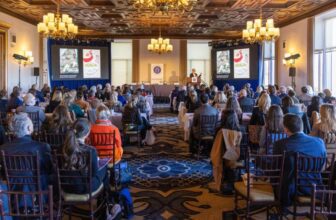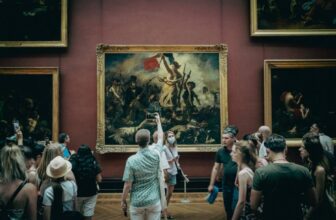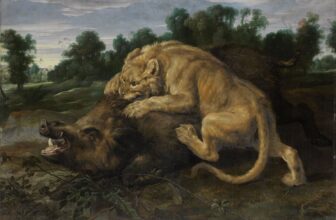
Meaning of The Headless Horseman Pursuing Ichabod Crane
In the shadowy corridors of American folklore and romanticism, few images are as iconic or unsettling as The Headless Horseman Pursuing Ichabod Crane by John Quidor. Painted in 1858, this artwork is more than a mere depiction of a supernatural chase, it is a narrative-rich canvas that merges history, myth, symbolism, and cultural anxiety. With a masterful use of composition, lighting, and storytelling, Quidor captured a scene that resonates with the collective American imagination. This article offers a deep exploration into the meaning, symbolism, and artistic context of this remarkable painting.
The Artist Behind the Canvas: Who Was John Quidor?
John Quidor (1801–1881) was an American painter whose works are often associated with literary themes, particularly those drawn from early American literature. Born in Tappan, New York, Quidor was trained under John Wesley Jarvis, one of the leading portraitists of the time. However, unlike many of his contemporaries who focused on portraiture or grand historical scenes, Quidor leaned heavily into genre scenes, often infused with satire, humor, or supernatural elements.
Quidor’s artistic career was sporadic and underappreciated during his lifetime. He struggled to gain commercial success, largely due to his unconventional style, which blended elements of European romanticism, Dutch genre painting, and American gothic themes. Despite these challenges, he produced over 35 known paintings, many of which take inspiration from the works of Washington Irving, particularly The Legend of Sleepy Hollow and Rip Van Winkle.
Origins of the Painting: How It Was Created
The Headless Horseman Pursuing Ichabod Crane was painted in 1858 and is widely considered one of Quidor’s most famous works. The painting draws directly from Washington Irving’s 1820 short story The Legend of Sleepy Hollow, a seminal piece of early American literature that explores themes of superstition, identity, and the clash between rationality and the unknown.
Quidor interpreted this climactic moment from the story using oil on canvas. While little documentation exists detailing his precise process, we know that Quidor often based his paintings on literary texts, carefully choosing specific scenes that lent themselves to dramatic visual interpretation. His decision to depict the exact moment Ichabod Crane is chased by the Headless Horseman allows for a dynamic and atmospheric rendering of suspense and terror.
What’s Happening in the Painting?
In Quidor’s The Headless Horseman Pursuing Ichabod Crane, the scene unfolds in the eerie moonlit woods of Sleepy Hollow. The gaunt, awkward school teacher Ichabod Crane is mounted on a frightened, spindly horse, racing in blind panic through the haunted forest. Behind him looms the dreadful specter, the Headless Horseman, mounted on a dark steed, arm raised with a menacing pumpkin in hand, ready to hurl it at Ichabod.
This moment is drawn from the climactic conclusion of Irving’s story, where Ichabod, after a night of ghost stories and unrequited love, finds himself pursued by what may be either a supernatural figure or a cruel prankster. Quidor captures this exact moment of high tension and ambiguity, the horseman is close, Ichabod’s face is a mask of fear, and the viewer is suspended in the terror of impending doom.
Artistic Style: What Type of Art Is It?
The painting is an example of American Romanticism, fused with genre painting and literary illustration. Quidor’s style is highly distinctive, blending romantic dramatic lighting with a caricature-like treatment of figures. The elongated form of Ichabod, the exaggerated expressions, and the shadowy, dream-like setting all contribute to a painting that feels both theatrical and surreal.
Stylistically, Quidor was influenced by Dutch Golden Age painting, particularly in his use of light and dark, and by European Romantic artists like Delacroix, who often depicted scenes full of emotional intensity and narrative weight. However, Quidor’s work is thoroughly American in theme and tone. His paintings tap into the early national identity, exploring how myth and storytelling shaped the cultural consciousness of the young United States.
Symbolism and Deeper Meaning
A. The Headless Horseman: Symbol of Fear and the Unknown
The Headless Horseman is a richly symbolic figure. In the painting, and the story, he represents the lingering trauma of war (he is said to be the ghost of a Hessian soldier), the fear of the supernatural, and the threat of unresolved pasts. Headless, he is a grotesque image of decapitated authority and the violent disruption of reason.
In a broader sense, the Horseman embodies the inescapable specter of death, or perhaps the uncontrollable nature of superstition. His anonymity and silence make him terrifying; he is fear incarnate, a force rather than a character.
B. Ichabod Crane: The Outsider and Rational Mind
Ichabod symbolizes the intellectual and rational man, an outsider who does not belong in the rustic, superstitious village of Sleepy Hollow. In Quidor’s painting, his gangly posture and wide-eyed terror contrast starkly with the spectral grace of the Horseman. He is bookish and arrogant, and in fleeing from the Horseman, he may also be running from forces beyond his comprehension, social, emotional, or supernatural.
Quidor’s depiction seems to mock Ichabod slightly, suggesting that his downfall is not just a result of fear but of pride and foolishness.
C. The Forest: Symbol of the Subconscious and the Untamed
The dark woods serve as a liminal space, neither civilized nor fully wild, a setting where the boundaries between the real and the imagined blur. In folklore, forests often represent the unknown or the subconscious. In Quidor’s painting, the forest envelops the scene, suggesting that Ichabod is not just running from a phantom, but from the deeper shadows of his own psyche.
What Does The Headless Horseman Painting Represent?
More than a literal scene from a ghost story, The Headless Horseman Pursuing Ichabod Crane represents the American Gothic in visual form. It embodies the tension between rationalism and folklore, Enlightenment ideals and lingering superstitions, and civilization versus nature.
It also reflects national anxieties. Painted in 1858, on the eve of the American Civil War, the painting can be seen as a metaphor for a society on the brink, haunted by its violent past and uncertain about its future. The Horseman, perhaps, is the specter of history catching up with Ichabod, just as the unresolved sins of America were catching up with the nation.
Interpretation: Is the Horseman Real?
One of the enduring ambiguities of both the story and the painting is whether the Headless Horseman is a ghost or a human in disguise. Washington Irving leaves this question unanswered, and Quidor does too. The painting does not provide supernatural evidence, the Horseman could be Brom Bones, Ichabod’s romantic rival, playing a terrifying prank.
This ambiguity is essential. It speaks to the power of belief, the fragility of perception, and the thin line between imagination and reality. Quidor’s ghostly lighting and dream-like composition invite the viewer to wonder: is this an external event or Ichabod’s own nightmare?
The Painting’s Current Location
Today, The Headless Horseman Pursuing Ichabod Crane is housed at the Smithsonian American Art Museum in Washington, D.C. It is part of the museum’s permanent collection and is considered one of the most significant pieces of 19th-century American genre painting.
The museum’s acquisition of the work reflects a broader appreciation of Quidor’s unique contributions to American art. Though largely forgotten during his lifetime, his works are now seen as pioneering efforts to create a distinctly American visual language rooted in storytelling, folklore, and psychological depth.
Influence
Quidor’s interpretation of The Legend of Sleepy Hollow has inspired generations of illustrators, filmmakers, and artists. His Horseman is not merely a character, but a visual archetype of horror. The dynamic, haunting quality of the painting anticipates later American horror aesthetics, from gothic films to Halloween imagery.
Moreover, the painting represents one of the earliest attempts in American art to adapt a literary scene into a psychologically complex visual narrative, something that would later become central in illustration, cinema, and popular culture.
Why the Painting Still Matters
The Headless Horseman Pursuing Ichabod Crane is not just an illustration, it is a meditation on fear, society, and the human psyche. Quidor’s painting stands as a bridge between the old world and the new, between myth and history, between reason and madness.
In Ichabod, we see our own doubts and insecurities, chased by forces we cannot always name. In the Horseman, we see the inevitable, death, history, or the past, gaining ground. And in Quidor’s brushstrokes, we glimpse the uneasy beauty of a nation still haunted by its stories.




